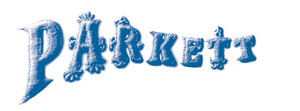Working across a wide range of media, Andrea Büttner investigates faith, shame, and the nature of representation itself. Here Julia Bryan-Wilson considers the roles of littleness and queerness in her practice; Christoph Menke focuses on her reimagining of Kant’s writing through images; and Aram Moshayedi studies her longtime engagement with the woodcut.
For her Parkett edition, Andrea Büttner has made Piano Stool, a vibrant silkscreen in four colors, as well as a chair made of beech wood and upholstered with yellow handwoven silk and wool. For additional information on these two works, please visit our website.
“Büttner probes ‘tricky’ thresholds not often explicitly explored in contemporary art—the blurry line between amateur making and fine art production, for instance, or the unexpected relationship between marginal religious experiences and philosophies of modernist contemplation.”
–Julia Bryan-Wilson
Abraham Cruzvillegas’ precarious sculptures echo the improvised methods of construction found in settlements across Latin America. In this issue, Tom McDonough contemplates the artist’s negotiation of radically different economic systems; Doryun Chong maps connections between Mexico and Korea; and Aline Hernández discusses the politics of resistance that underlie his work.
For his Parkett edition, Abraham Cruzvillegas has made Autoconclusión, comprised of a wooden briefcase with 34 bamboo sticks in 34 different colors as well as a seven-color silkscreen. Details on this beautiful and interactive “boîte” with insights in the artist’s key ideas can be seen our website.
“The significance of Autoconstrucción is its lesson in how human activity produces forms within and in spite of the real social conditions of uneven development that their producers, including the artist, must necessarily inhabit.”
–Tom McDonough
Camille Henrot carves stunning visual narratives out of the chaotic jumble of information overload, remixing images and histories across time and space. Joshua A. Bell looks at the Oceanic philosophies that inform her work; Diedrich Diederichsen underlines how the loss of an epistemological center is made present; and D. Graham Burnett surfs the web while watching her 2013 masterpiece Grosse Fatigue.
For her Parkett edition, Camille Henrot has created Extinction on the Table, a striking double sided print on thick nitrile rubber. More info on this part print, part sculpture can be seen by visiting our website.
“Henrot consistently places the many strands in her work—different media, genres, associative registers—in counterpoint, a poignant strategy that recalls the great traditions of cinema.”
–Diedrich Diederichsen
Hito Steyerl’s videos interweave personal histories, popular culture, and political movements as they trace the circulation of images and the slippage of their signification. Ed Halter places the artist in a lineage of filmmakers and analyzes how her work diverges; Brian Droitcour Googles her; and Linda Stupart examines the artist’s use of her self as material.
For her Parkett edition, Hito Steyerl has made Gosprom, an almost 3-D-like impactful silkscreen in seven colors that references constructivist Soviet architecture. Images and additional information can be seen on our website.
“Steyerl’s recent films have concerned themselves ever more with the digital spaces where circulationism now occurs, stressing the two-dimensional surface of the computer screen.”
–Ed Halter
Also in this issue: Konrad Bitterli views Hubbard/Birchler’s latest film trilogy; Ory Dessau vaunts the paintings of Markus Döbeli, Parkett Editor Mark Welzel visits “Situations,” a series of exhibitions organized by Fotomuseum Winterthur and presented across multiple platforms; Kilian Rüthemann has made a 12-page INSERT featuring a cycle of 12 paintings.
For more details on Parkett 97 as well as on artists’ editions, subscriptions, and back issues, please visit www.parkettart.com.



